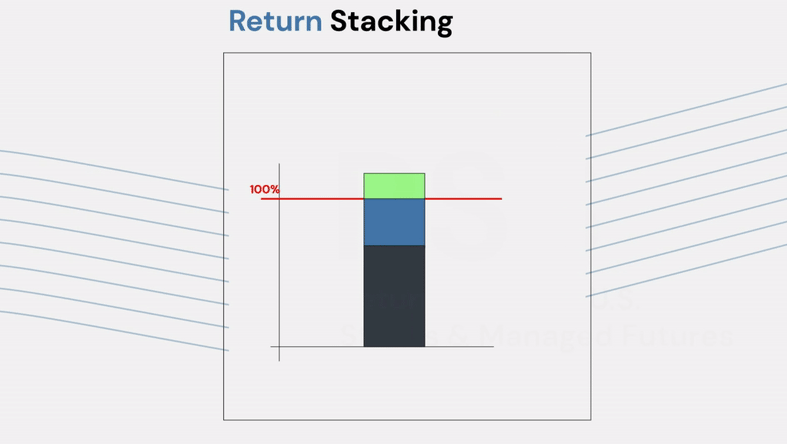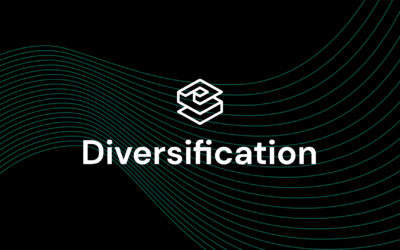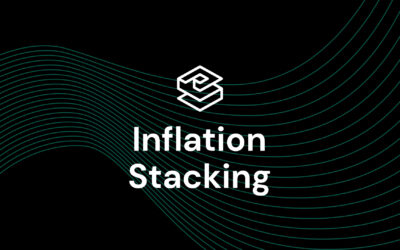Return Stacked® Portfolio Solutions
Unlocking the Benefits of Diversification
Make room for alternatives without having to sacrifice core stock and bond exposure.
What is Return Stacking?
At its core, Return Stacking is the idea of layering one investment return on top of another, achieving more than $1.00 of exposure for each $1.00 invested.
This allows investors to maintain their core stock and bond exposure while simultaneously introducing new, diversifying return streams.

Why Return Stacking?
Today, professionally managed mutual fund and exchange-traded products allow investors to implement this concept. We are developing the research, product design, and portfolio construction that unlocks this opportunity for everyone.
Pursuing Diversification without Sacrifice
Opportunity for
Enhanced Returns
By introducing additional sources of return, Return Stacking creates the potential for outperformance, which may be particularly attractive in an environment where expected returns for traditional assets may be muted.
Potential to
Improve Diversification
WHAT WE DO
Our Solutions
ETFs
ETFs to help you implement return stacking in your portfolio.
Model Portfolios
Turnkey solutions that can be customized to your client’s risk profile to achieve a range of outcomes.
Consulting
Learn how capital efficient funds can be used to help stack alternatives on top of traditional allocations.
Stay up to date with our research.
Dive deep into our research blog where we explore the concepts of return stacking.
Return Stacking with Fast and Slow Diversification: A Framework for Market Volatility
By understanding the different roles played by “immediate responders,” “delayed responders,” and “diversifiers,” and by applying innovative techniques such as return stacking, advisors can help clients navigate volatility without reducing core stock and bond allocations.
Stacking for Different Objectives Part 3: Inflation Hedging
This post outlines two inflation‑oriented stacks, a directional inflation beta sleeve and an inflation convexity sleeve, that can be added to a 60 / 40 portfolio to help preserve real wealth when price levels move unexpectedly.
Stacking for Different Objectives Part 2: Absolute Return
This post examines an Absolute Return stack that layers diversifying return streams over a core 60 / 40 portfolio. The objective is steadier performance and a higher information ratio so that clients remain confident regardless of market direction.


